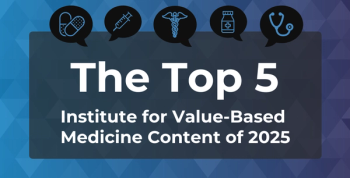
Recognizing and Addressing Primary Aldosteronism in Hypertension Management: Vivek Bhalla, MD

Vivek Bhalla, MD, Stanford, calls for greater awareness and implementation of existing screening guidelines to help identify patients who may benefit from more targeted, disease-specific interventions for hypertension in the setting of primary aldosteronism.
At the
Primary aldosteronism is an endocrine disorder characterized by autonomous aldosterone production from the adrenal glands—secretion that occurs independently of usual physiological suppressors. “Aldosterone itself is an important hormone for us to be able to live, but if it's made when it's not supposed to be made,” he explains, “then it can be deleterious”—with downstream consequences that include cardiovascular and kidney disease. Notably, these risks are not solely attributable to the associated hypertension; aldosterone has been shown to exert direct adverse effects on the heart and kidneys.
Despite its clinical significance, primary aldosteronism remains vastly underdiagnosed. Bhalla emphasized that current screening rates are too low, even though guidelines from the American Heart Association and the American College of Cardiology, as well as Canadian blood pressure guidance, recommend targeted testing in specific patient populations. “We are to be screening for primary aldosteronism in a variety of patients based on severity of blood pressure—patients with resistant hypertension and hypertension with and without various other clinical factors,” he explained. “That's going to include resistant hypertension, which is an uncontrolled hypertension with some of the indications for these novel agents, as well as for renal denervation.
In the broader context of the session on hypertension management, which included presentations on lifestyle interventions by Alison L. Bailey, MD, FACC, FASP, Centennial Heart Cardiovascular Consultants, novel drug therapy by Luke Laffin, MD, Cleveland Center for Blood Pressure Disorders; and
“It's really a step-wise process,” Bhalla noted, “and once you rule out this very common but consequential cause of secondary hypertension, primary aldosteronism, and you're unable to manage patients with other standard pharmacological therapy, then these novel agents and devices come into play.” He pointed to recent developments discussed by fellow presenters Laffin and Bhatt as potentially beneficial in treatment-resistant cases.
In closing, Bhalla called for greater awareness and implementation of existing screening guidelines to help identify patients who may benefit from more targeted, disease-specific interventions for hypertension.
Newsletter
Stay ahead of policy, cost, and value—subscribe to AJMC for expert insights at the intersection of clinical care and health economics.







































